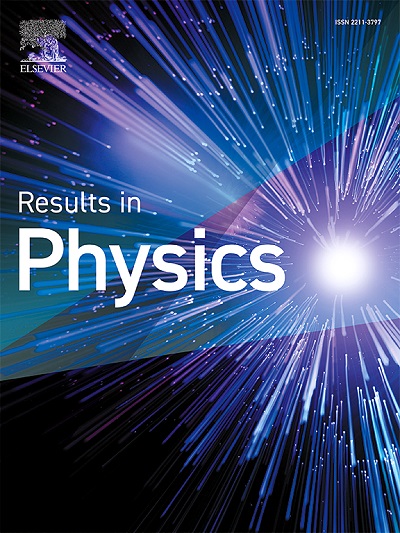Qualitative analysis of fractal–fractional order Coffee Berry epidemic model on an agricultural farm
IF 4.6
2区 物理与天体物理
Q2 MATERIALS SCIENCE, MULTIDISCIPLINARY
引用次数: 0
Abstract
Coffee Berry Disease (CBD) poses a serious threat to global coffee production by reducing both yield and bean quality. Existing mathematical models based on classical integer-order calculus often fail to reflect the true dynamics of the disease, as they overlook memory effects and spatial variations commonly observed in agricultural systems. In this study, we introduce a new mathematical model called the Fractal–Fractional Coffee Berry Disease Infestation (FFCBDI) model. It is the first of its kind to apply Caputo-type fractal–fractional derivatives to model CBD progression. A key innovation in this model is the inclusion of a recovered berry compartment, which accounts for the possibility of re-infection due to environmental stress or pathogen persistence. The model incorporates two important parameters-fractional order and fractal dimension-to capture time delays and spatial heterogeneity more accurately. We analyze essential mathematical properties such as positivity, boundedness, existence, uniqueness, and stability. A bifurcation analysis is also performed to identify threshold values that determine whether the disease will spread or die out. Numerical simulations show how different parameter values influence disease dynamics. The proposed FFCBDI model offers a more realistic and flexible framework for understanding CBD transmission, which can support better prediction and control strategies in real-world agricultural settings.
某农场分形-分数阶咖啡浆果流行模型的定性分析
咖啡浆果病(CBD)通过降低产量和咖啡豆质量对全球咖啡生产构成严重威胁。基于经典整阶微积分的现有数学模型往往不能反映疾病的真实动态,因为它们忽略了在农业系统中常见的记忆效应和空间变化。在这项研究中,我们引入了一个新的数学模型,称为分形-分形咖啡莓病侵染(FFCBDI)模型。这是首次将caputo型分形-分数阶导数应用于CBD级数模型。该模型的一个关键创新是包含了一个恢复的浆果隔室,这说明了由于环境压力或病原体持久性而再次感染的可能性。该模型结合分数阶和分形维数两个重要参数,更准确地捕捉时间延迟和空间异质性。我们分析了基本的数学性质,如正性、有界性、存在性、唯一性和稳定性。还进行了分岔分析,以确定确定疾病是否会传播或消失的阈值。数值模拟显示了不同参数值对疾病动力学的影响。所提出的FFCBDI模型为理解CBD的传播提供了一个更加现实和灵活的框架,可以支持在现实农业环境中更好的预测和控制策略。
本文章由计算机程序翻译,如有差异,请以英文原文为准。
求助全文
约1分钟内获得全文
求助全文
来源期刊

Results in Physics
MATERIALS SCIENCE, MULTIDISCIPLINARYPHYSIC-PHYSICS, MULTIDISCIPLINARY
CiteScore
8.70
自引率
9.40%
发文量
754
审稿时长
50 days
期刊介绍:
Results in Physics is an open access journal offering authors the opportunity to publish in all fundamental and interdisciplinary areas of physics, materials science, and applied physics. Papers of a theoretical, computational, and experimental nature are all welcome. Results in Physics accepts papers that are scientifically sound, technically correct and provide valuable new knowledge to the physics community. Topics such as three-dimensional flow and magnetohydrodynamics are not within the scope of Results in Physics.
Results in Physics welcomes three types of papers:
1. Full research papers
2. Microarticles: very short papers, no longer than two pages. They may consist of a single, but well-described piece of information, such as:
- Data and/or a plot plus a description
- Description of a new method or instrumentation
- Negative results
- Concept or design study
3. Letters to the Editor: Letters discussing a recent article published in Results in Physics are welcome. These are objective, constructive, or educational critiques of papers published in Results in Physics. Accepted letters will be sent to the author of the original paper for a response. Each letter and response is published together. Letters should be received within 8 weeks of the article''s publication. They should not exceed 750 words of text and 10 references.
 求助内容:
求助内容: 应助结果提醒方式:
应助结果提醒方式:


